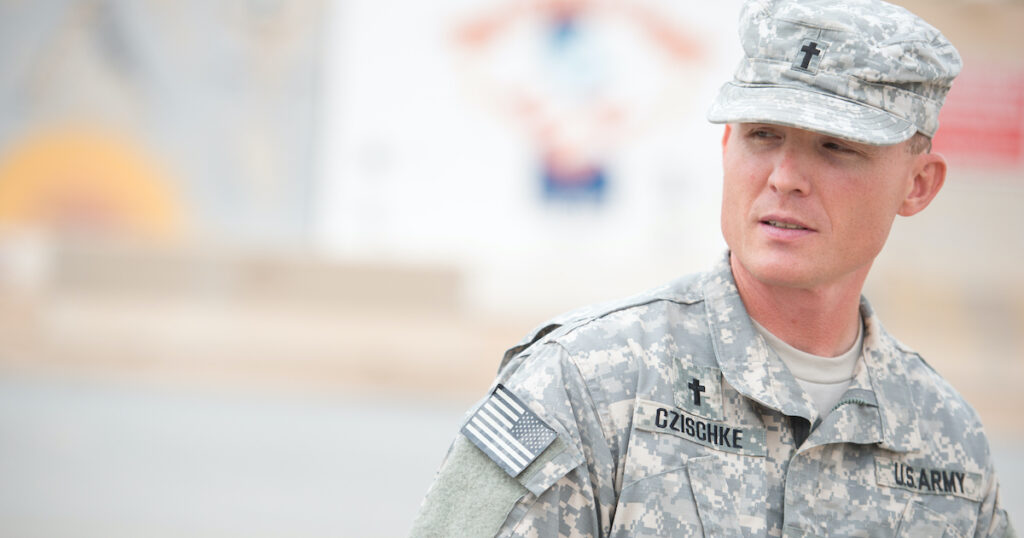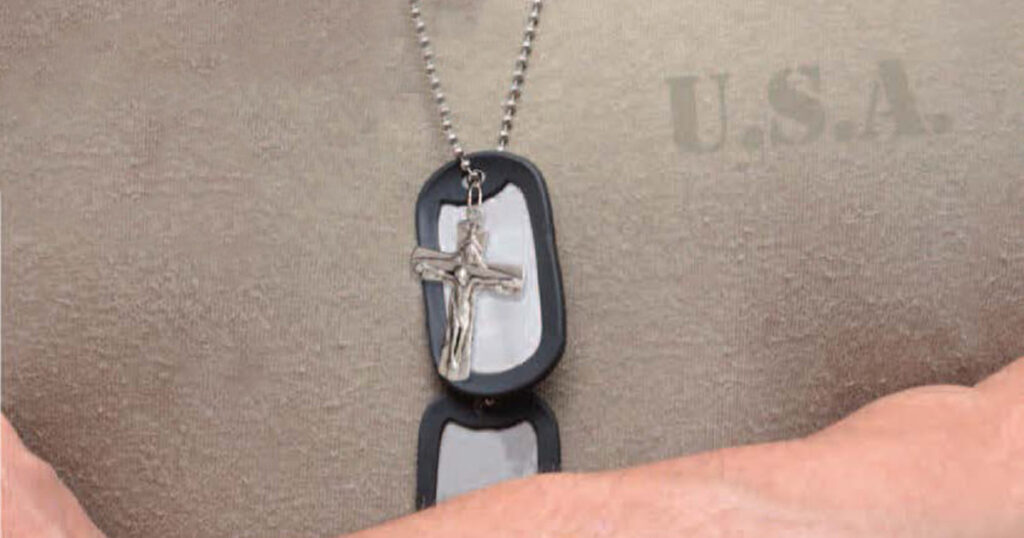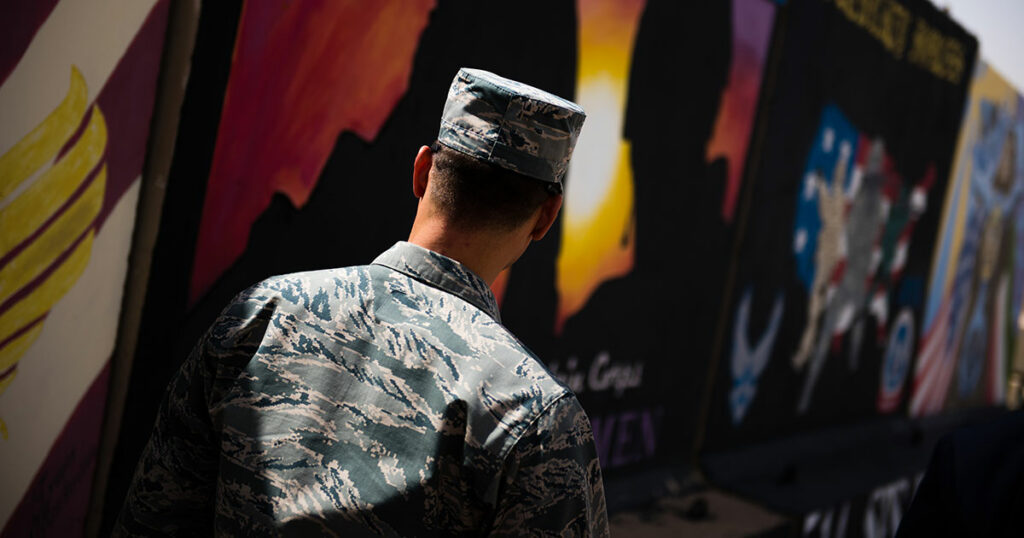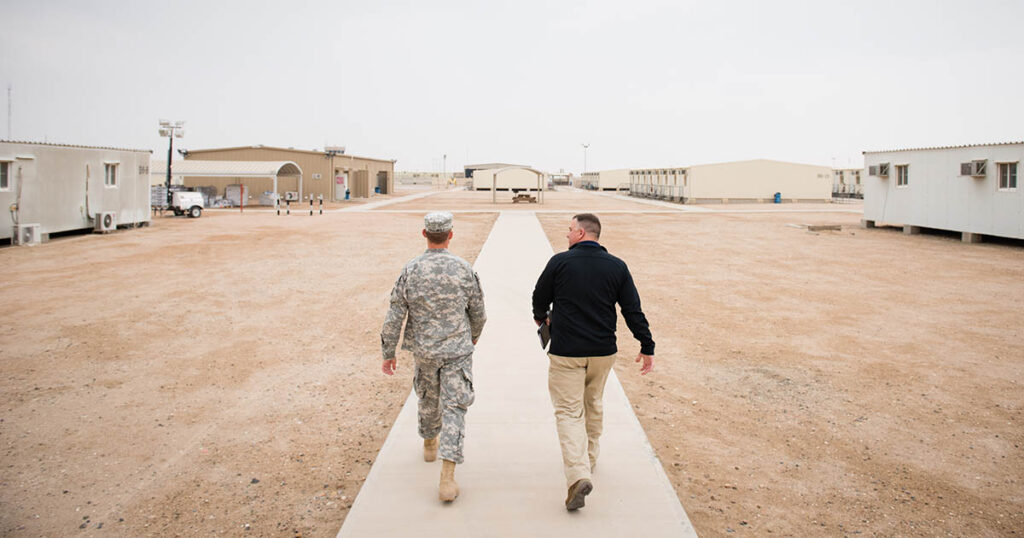A complete guide for congregations with a reserve chaplain pastor
The LCMS has nearly 150 chaplains across the Army, Navy, Air Force, Civil Air Patrol and Coast Guard. Of these, 75 are reserve or National Guard chaplains, serving in LCMS congregations when they are not deployed. At some time or another, most of these chaplains will receive mobilization orders, and will be deployed for some period of months to active service.
If you are one of the congregations that has a reserve chaplain serving you as a pastor, what steps should you take to prepare for a future deployment? And what should you do during the deployment, to care for your pastor and his family, as well as the congregation in his absence? How can you make his reintegration process quick and painless when he returns?
The following advice from LCMS Ministry to the Armed Forces (MAF) provides the steps a congregation should take at each stage of their pastor’s deployment.
Before your pastor is mobilized
Before the time comes for a chaplain to be mobilized, it’s important that the congregation have in place a “congregational agreement” with their pastor, which details the process that will “kick in” when he receives his notification. LCMS Ministry to the Armed Forces has several templates for such an agreement, which can be obtained by contacting the MAF office.
When your pastor is mobilized
When a pastor is first mobilized, it will typically be around eight months to a year before he leaves. This time requires regular communication between him and the congregation, and they should put in place a plan for his deployment and for his return.
Here are some of the steps the congregation should take during that time:
- Reach out to the LCMS Ministry to the Armed Forces office for guidance and resources as you put together your plans for the coming deployment.
- Communicate to the congregation the importance of the work their pastor is going to do, and how his ministry is an extension of their ministry as a congregation.
- Compile a list of the things your pastor’s family could use help with while he is away, and identify specific people in the congregation who are able and willing to help with these specific needs (see the next section for examples). Having these plans in place ahead of time will help give both the pastor and his family peace of mind as he prepares to leave.
- Hold a “pre-deployment brief” with the congregation and the pastor and his family, and walk through how the deployment will look, setting expectations and reassuring both the pastor and congregation members about the coming months.
- Coordinate pulpit supply for the time that the pastor will be away, if these plans are not already in place. If you need assistance, reach out to your district and the MAF office.
- Organize and hold a Sending Service shortly before your pastor leaves to formally recognize the mission he is leaving to fulfill, to commit his work into God’s hands and to show the congregation’s support of his work. This service can include a variety of different elements; you can find a sample sending service here.
While your pastor is deployed
Once your pastor leaves, there are some ways your congregation can care for him directly — such as sending care packages and notes of encouragement. These efforts can be coordinated in partnership with the MAF office, which has an Adopt-a-Chap program which supports deployed LCMS chaplains.
However, the best way to care for him is providing for his family while he is gone. Here are some ways a congregation can provide for a chaplain’s family while he is away:
- Car care — Designate one or more people to take care of oil changes, car washes, routine maintenance, car trouble and any other car-related needs that may arise.
- Childcare — Offer to include the chaplain’s children in family outings, especially if you have children around the same ages. This can be a great joy for the kids and can provide times of quiet and relief for their mother. Or offer to watch the kids for an evening or an overnight and give her a break.
- House upkeep — Designate people to perform routine tasks such as checking the furnace before winter, checking the air conditioner before summer, painting, carpet cleaning, etc., or who can be on call to help with these things as needed.
- Yard care — Take on yard tasks such as mowing the grass, raking leaves or shoveling snow.
- Checking in — You may not see all of the needs of your pastor’s family, and what you might not know what they truly need. Check in and ask. Remember to ask not just how her husband is doing in his service, but how she and her children are doing. If she mentions difficulties they are facing, try to find concrete ways those needs can be met, and specific people in the congregation who are willing and able to help out with them.
“Make a list of everything,” said Chaplain Craig Muehler, director of MAF. “Whatever the roles and responsibilities were in the household — if mom didn’t take care of that, she needs to get that on her list of who to call when this breaks down, that breaks down. … And that’s were a congregation can really step up.”
“If the chaplain knows that his wife and family is being taken care of by the congregation, it’s the biggest thing. … For a pastor to know he can focus on his ministry, knowing that the family is taken care of at home, is huge,” he continued.
Lastly, the most important thing you can do as a congregation is pray: Pray for the chaplain in his work, and pray for his family and their wellbeing while he is away.
When your pastor is coming home
When your congregation receives word that your pastor will be returning home, the steps to prepare for reintegration are just as important as the steps to prepare for deployment.
Hold a “reintegration brief” with the congregation to help them to understand that reintegration may be difficult in some ways for their pastor, and to encourage them in the ways that they can help with this next transition. Contact the MAF office for guidance and resources on the reintegration process.
When your pastor returns
While you may have planned for helping your pastor and his family with the difficulties of his being away, you might not have anticipated are the difficulties that can surround his coming back.
Adjusting back to life at home and in the congregation after deployment can be tricky, and there are ways that you can help make this process easier for your pastor and his family.
- Develop a plan ahead of time to welcome him back. A ceremony welcoming him back in church is a great way to acknowledge his service and thank him and his family for the sacrifices they have made, and to thank God for sustaining them through it. Congregations should be creative about the ways in which they honor and welcome their pastor home — one congregation recently organized a parade that the whole town came out for when their pastor returned from deployment.
“The sky’s the limit with the imagination of congregations to make their pastor feel welcome again,” said Chaplain Steven Hokana, MAF’s assistant director. “And I think that’s really one of the most important parts of reintegration.”
- Don’t expect your pastor to be “back to work” the moment he lands. Provide him with some time off with his family to rest and readjust to life back home. Communicate with him and strive to honor either his expressed need for rest, or his willingness to get back to some of the normalcy of work as soon as possible.
- Work to get him back “up to speed.” Take stock of what has gone on in your congregation and community in his absence, and prepare a brief to fill him in and help him transition smoothly and confidently back into the role of pastor.
- Listen, but don’t pry. Be understanding of the difficult things he may have experienced during his deployment, and let him set the agenda for sharing his experiences.
An extension of your ministry
At every stage of deployment, Muehler says that the most essential thing is that everyone — both the chaplain and the congregation — keep in mind their partnership in this ministry.
“We really appreciate and are so thankful for congregations that allow their pastors to do this,” he said, “because it really is an extension of their local ministry. They’re sending their pastor on a nine-month mission trip to serve 18- to 25-year-olds who would never darken a church door, but they’re going to have their pastor for nine months, they’re going to know him very well, and he’s going to know them very well. And so the opportunities for the Gospel are amazing. And the congregations that are sending him, I want them to connect with that, take ownership of that — this is an extension of their ministry.”
“More than any of the planning or logistical details, this unity is important,” Muehler said.
“Once you’re in this together, even when hard times come you can rally together and complete the mission.”
For each stage of a reserve chaplain’s deployment, LCMS Ministry to the Armed Forces has a wealth of expertise and resources, and is eager to share them with your congregation.
If you have questions about your pastor’s current or future deployment, or any other questions about LCMS Ministry to the Armed Forces, contact Chaplains Muehler and Hokana at LCMSChaps@lcms.org.
Photo: LCMS Communications/Erik M. Lunsford





